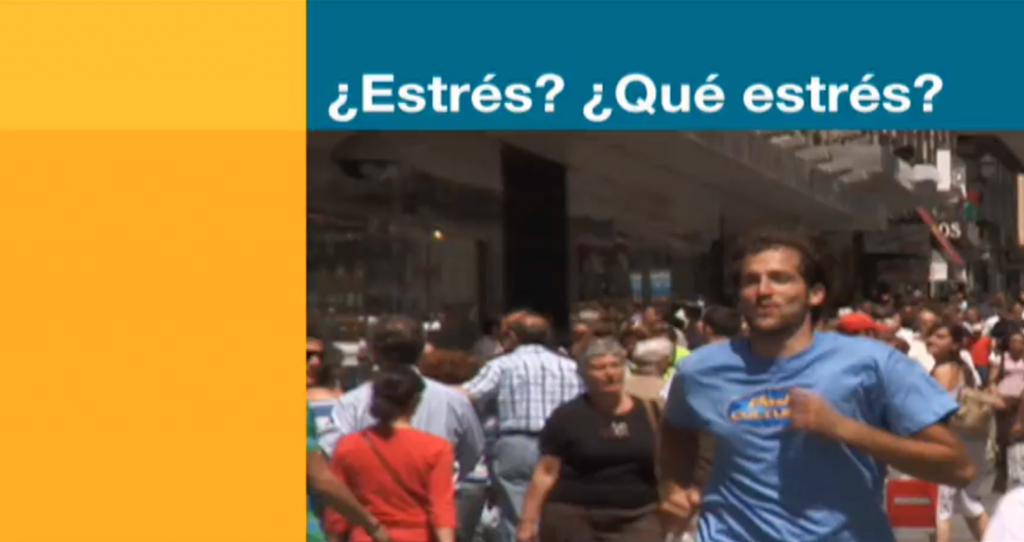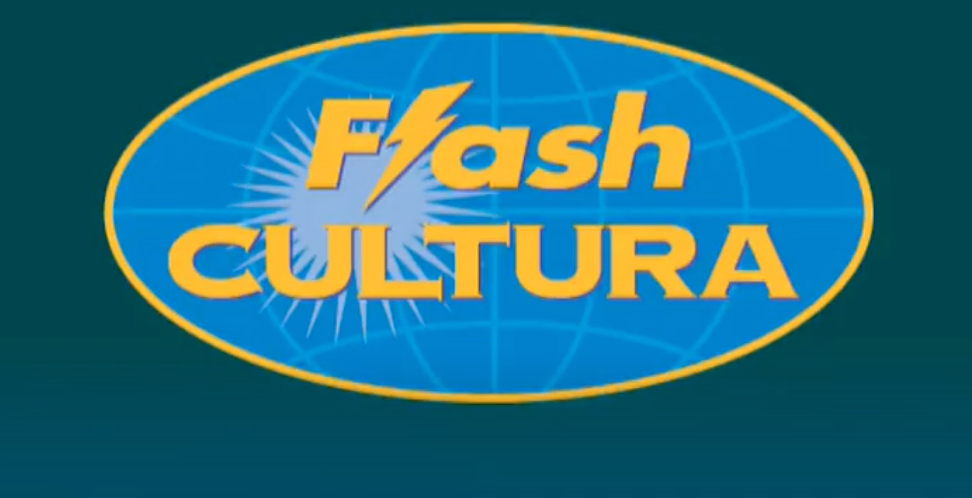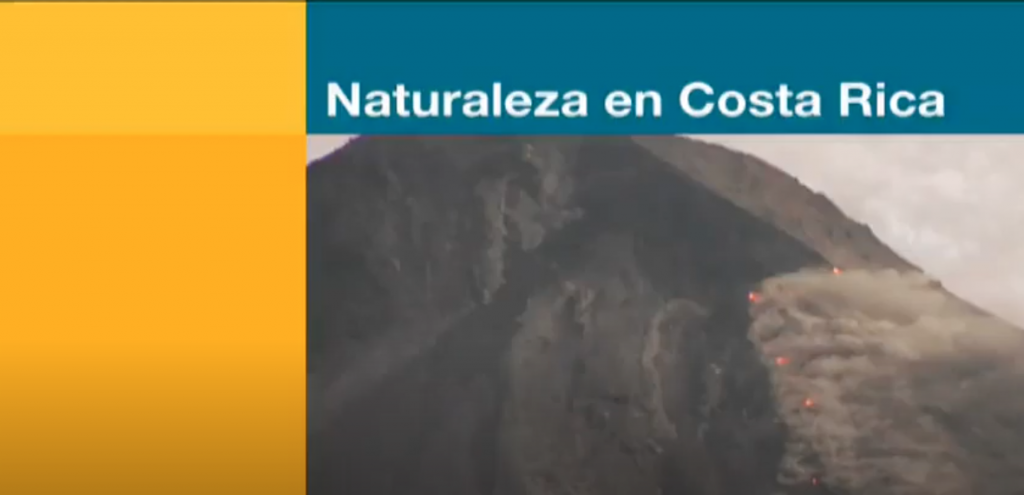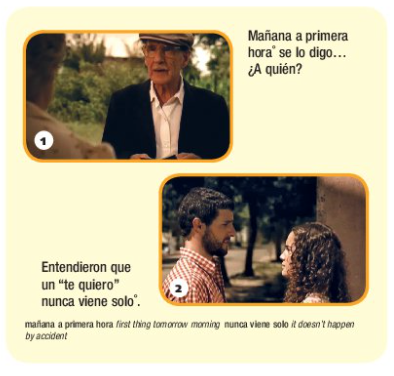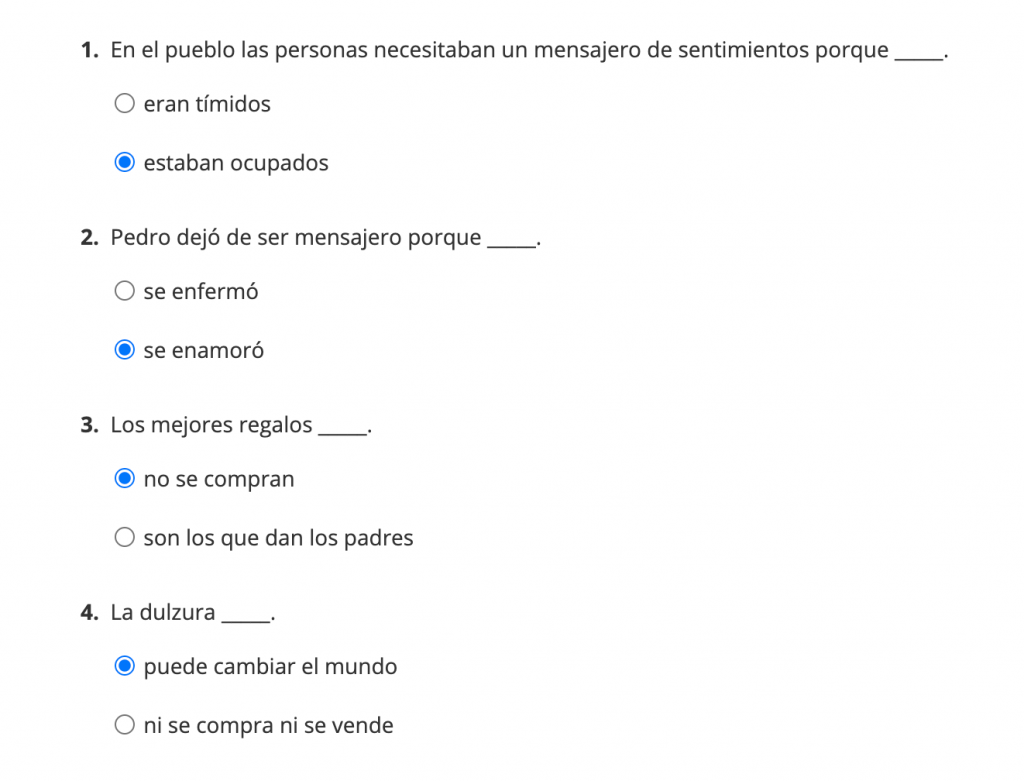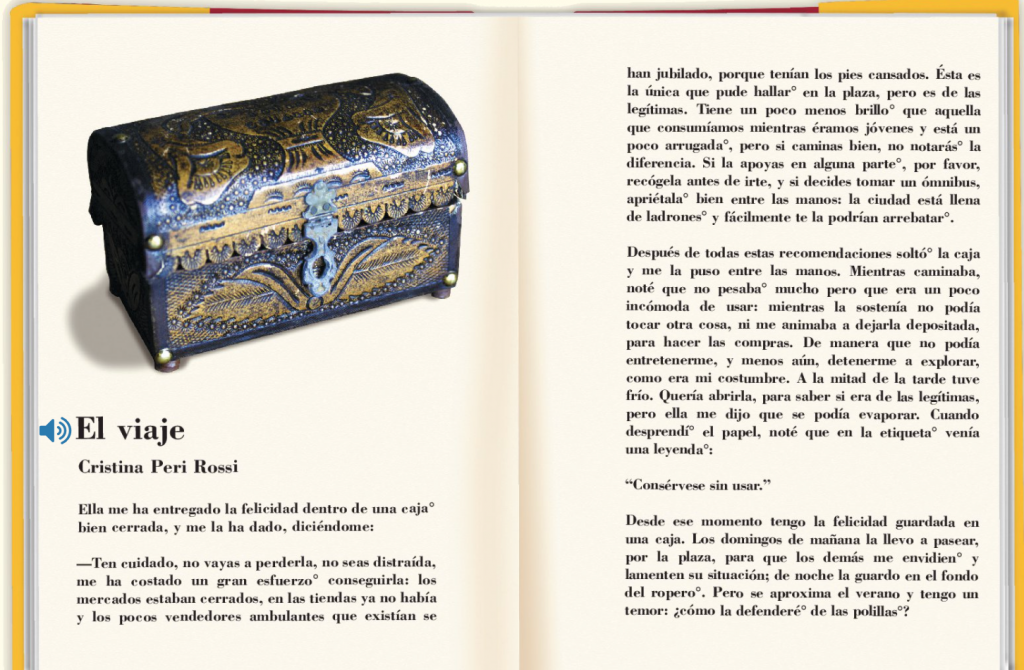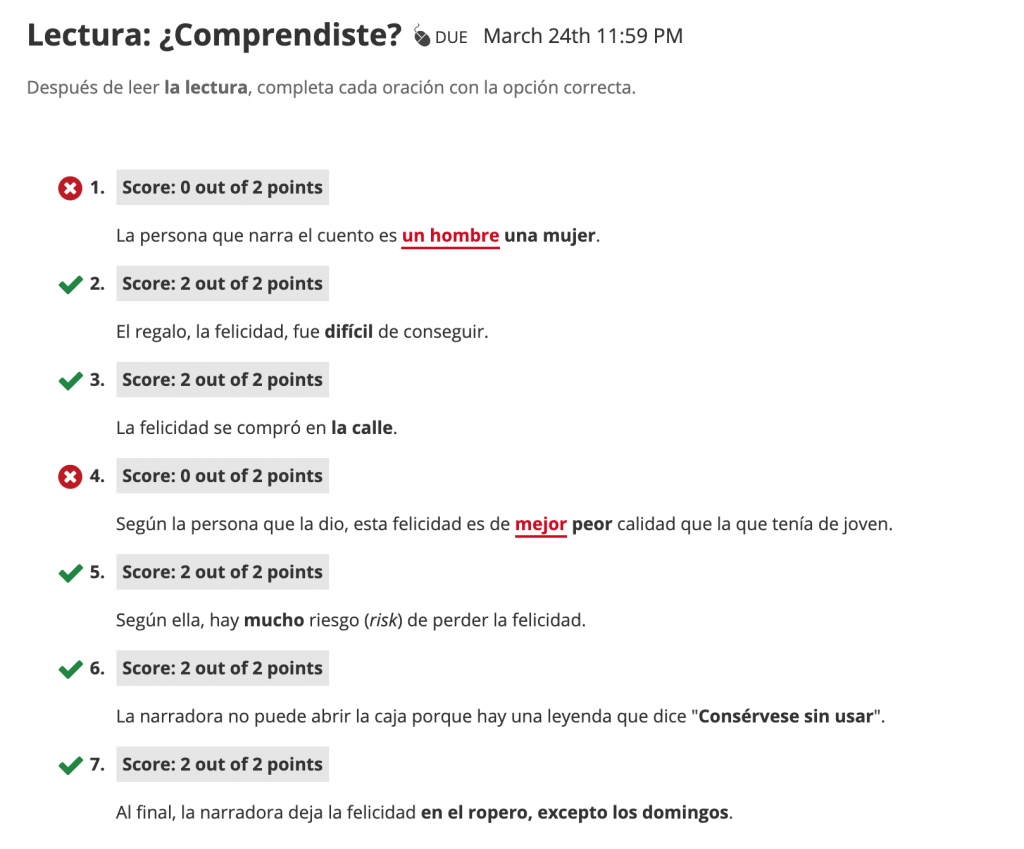Interpretive, Interpersonal, and Presentational Modes of Communication
Exploring Culture
Throughout the course, we have watched Flash Cultura videos that give insight to the day-to-day lives of another country. I have learned about the qualities of a variety of foreign cities and/or regions. Through these videos, I gained a little bit of insight into the traditions and values of some Spanish speaking cultures. I was also able to observe the course materials, such as vocabulary or grammar, in a real life setting. These were a good change-up from tutorials to expand from textbook knowledge to a deeper form of understanding and application.
Reflection: I attached the Flash Cultura video about the traffic and congested city of Madrid because this environment differed so much from my own. It was interesting to see how a city and its citizens run on the daily. Having been to big, highly-populated cities before, but never living in one, I was able to compare observations of my own to the content of the video. My perceptions of these countries were not changed, as I did not have any preconceived notions about them; however, I realized different norms that are not seen as often in United States’ cities. Also, in our first Flash Cultura video about Coast Rica’s natural landscape and features, I was shocked by the amount of variety that can be enjoyed by tourists and locals. In these videos, I was challenged to learn about the region and culture while paying attention to the grammar and unfamiliar vocabulary, which I think improved my listening and interpreting skills.
Artifacts: Lesson 16 & Lesson 13 Flash Cultura videos
Artifact: Flash Cultura questions
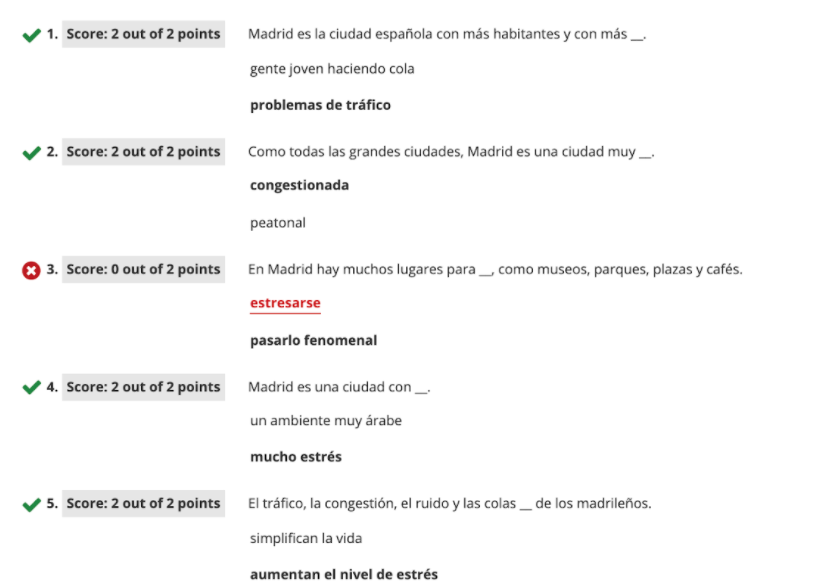
Engaging in Communities
By working with Talk Abroad partners and having tutor sessions with classmates, I was able to use Spanish as an avenue to engage in global and immediate communities. I learned a lot about my international partners, their culture, and what their day-to-day lives are like in our Talk Abroad conversations. Also, through the reading and video assignments, I was exposed to a variety of values, traditions, and societal norms. In tutoring sessions, I got to know my classmates, why they were drawn to Spanish, and also how we can relate to the material we were learning about.
Reflection: Not only did all of the activities in this course help expand my knowledge of the language, but they also have drawn me to the cultural aspects beyond the language itself. These activities inspire me to continue using Spanish as a way to learn more about the world around me. Watching videos about foreign culture or meeting with someone to practice Spanish, no matter how close or far away they are from me, made me feel more connected to the language and its community. As for my immediate community, I have learned that Spanish is not as well known or common as I thought. Some of the classmates who I met with were not as experienced in Spanish, while others were very natural at it, giving me more reasons to continue learning and improving. Not only can I communicate with more people in more places, but I can also spread and utilize what I know in my own backyard.
Artifact: Tutor Session Discussion Board
Haley Norton (my classmate) and I facetimed for about an hour, studying the Quizlet vocab of “La Naturaleza”. We went over the irregular subjunctive conjugations because we agreed those were harder for us to remember. We practiced using the vocab alongside of the subjunctive in a sort of Q&A. It was similar to those in the VHL activities. We did this on Tuesday, the 11th at 8:00pm. It was really helpful to be able work at our own pace and also meet a new friend.
Artifact 2: Lesson 14 El Metro del D.F. – Discussion Response to a Classmate
Me encanta conducir mi coche pero en los otros estados o países que no conozco, prefiero otro transporte.
Interpersonal Communication
We have participated in different types of communication and verbal exercises. We had two scheduled Talk Abroad meetings. We also completed a few Virtual Chat activities, in which we recorded our answers to a set of audio questions. The Virtual Chat activities were more structured and controlled, while Talk Abroad conversations were more spontaneous and could flow in any which way.
Reflection: Looking back at the interpersonal communication activities that I did in this course, I know I have gotten better with each assignment. In the spontaneous flow of a conversation, it was difficult to remember my target assignment and shape the conversation around that. I naturally came up with responses to questions and statements from my partner; however, they were not always relevant to my topic. In my second Talk Abroad, I prepared myself a bit more, which I believe helped steer the conversation more towards the topic of occupations that was assigned.
Truthfully, I wish I tried to incorporate more vocabulary from the lessons into my Talk Abroad assignments. Finding a way to uses the material in unplanned conversation will help me grow my Spanish tool box. The recorded Virtual Chat activities was where I was able to explore and try out the lesson materials. I made sure to use new vocabulary and grammar without any preparation. When comparing the two assignments, neither of them exhibited poor conversation skills, but the Virtual Chats were better because I was being asked specific questions, pointing me in the direction of the lesson materials. I need to learn how to do that for myself and my partner in Talk Abroad assignments, which I think can only be achieved through more practice and real-life conversation.
Artifact: Lesson 16 Virtual Chat Conversación
Presentational Speaking
In this class, I was introduced to two new forms of speaking practice, which were Virtual Chat activities and Voice Thread. Voice Thread was very similar to the Virtual Chat activities we did on VHL. Several audio recordings would present us with questions, and we recorded our answers to them. In Voice Thread, we would then reply to our classmates responses.
Reflection: These assignments were very helpful but less challenging than Talk Abroad. The questions lead me to use vocabulary from the lesson, allowing me to practice what I was learning without forcing it. During these activities, I did a good job of practicing new verb tenses and grammatical phrases as well. I would like to do these more often as practice, so I can get used to the lesson material in a conversational setting. Next time, it would be helpful for me to make these Virtual Chats and Voice Threads more like Talk Abroad by answering quicker. In a real conversation, I do not have time to perfect my answer in my head, so I need to work on thinking and responding faster.
Artifact: Lesson 15 Voice Thread – La Nutrición
Presentational Writing
We had two discussion board posts, both of which were in response to a Flash Cultura Video. One of them was a simple reflection, while the other answered a specific question. Also, we wrote a Composición based on the partners we chose for our Talk Abroad assignments.
Reflection: Looking at my discussion board post from the first lesson of the year to the last, I notice that I have gotten better at writing. My sentences have become more complex and the paragraph flows more naturally because of it. My responses are not boring or lacking detail anymore. I also think it was easier for me to answer with more detail because I had a direct question in the second discussion post. As for my composition, I can see places in which I tried to use new grammar tools that would not have been found in my writing last year. For example, I used the subjunctive form of “ir”, which I had no idea how to use at the beginning of this semester. I believe that my writing has improved a lot. I am confident that I am able to incorporate everything I have learned this semester, including different tenses and grammatical phrases. However, throughout most of my writing, there are errors that I never improved upon: spelling, masculine versus feminine nouns, accents, etc. I need to be better about re-reading aloud and checking for those sort of mistakes.
Artifacts: Discussion Boards & Composition
Spanish-Presentational-WritingInterpretive Listening
We have done many audio or video oriented assignments that require us to listen, interpret, and answer questions. These videos included Flash Cultura, skits, ads, or other informational clips. Also, we listened to audio players of conversations, phone messages, ads, and more.
Reflection: The listening activities helped me a lot because I was able to hear the grammar or vocabulary from the lesson in different types of situations. Being tested afterwards on how well I understood something was what really helped because I was able to see what I was hearing. Sometimes it was hard to correctly distinguish similar-sounding vowels and fast speech, leaving me to think it could be either one of two very similar sounding phrases. I had to replay the audio or video several times to figure out what phrases or words were possibly being said and what made sense with the context of the audio. When I could not figure it out and had to move on, the post-listening questions also helped point me in the right direction. Whether I answered them right or wrong the questions and various answer choices helped me understand what makes sense and what does not given the particular audio.
Artifact: Lesson 14 “Cruzar 9 de Julio” video clip & activities (on page 373 of Aventuras)
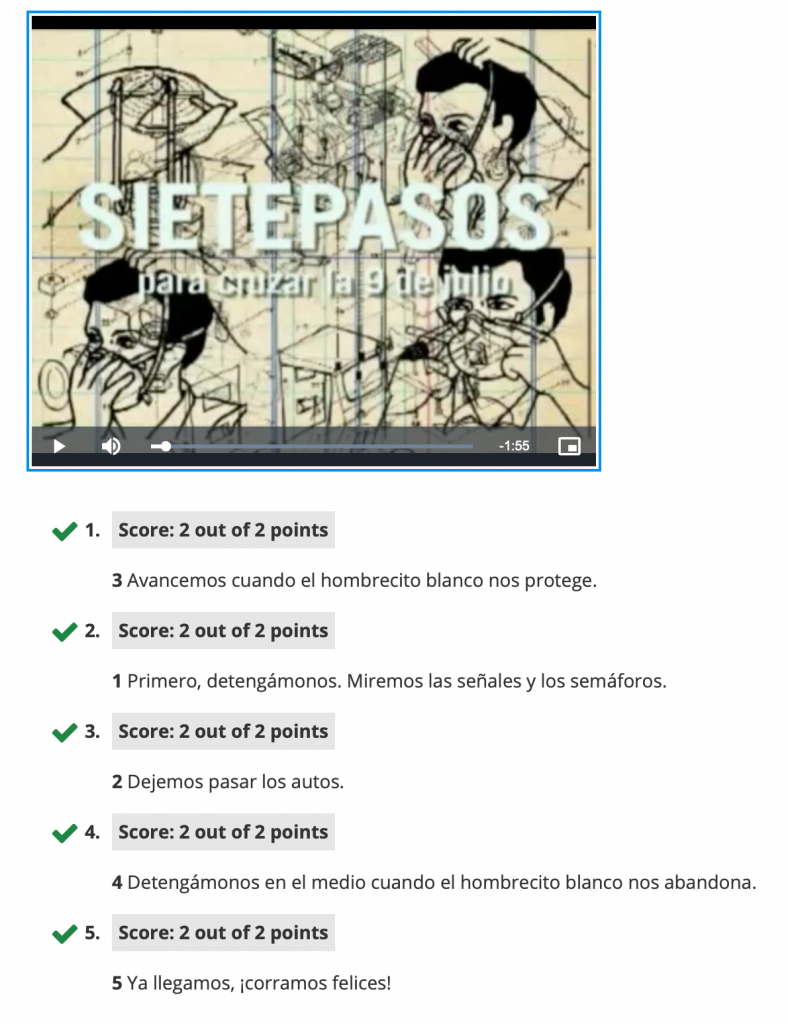
Artifact 2: Lesson 15 “Azucarlito” video clip & activities (on page 401 of Aventuras)
Interpretive Reading
Reading activities required us to read first and then answer multiple choice questions based on the material. These questions were less about grammar or vocabulary and more about general understanding. Even though we were not being quizzed on the lesson material specifically, we needed to recognize specific tenses or vocabulary in order to answer the when, where, or what happened in a story.
Reflection: The type of questions we got for reading assignments were not hard but also did not come from the passage word for word. I used to look at the wording of a question and the multiple choice answers to find the right answer. However, the types of questions and answer choices being presented, as well as the use of different grammar tenses in text, required me to better understand the text. Instead of just skimming or trying to understand just enough of the general plot/message to answer the questions, I needed to read carefully, break down the grammar, and interpret every phrase, so it made sense contextually before moving on. In this process, I was sort of translating what I was reading into English, including the correct tenses and familiar organization of words. It felt like I was breaking everything down step-by-step just to build it back up in a way that I understood better. Hopefully, in the future, this process will be faster and more natural.
Artifact: “El Viaje” story and questions
